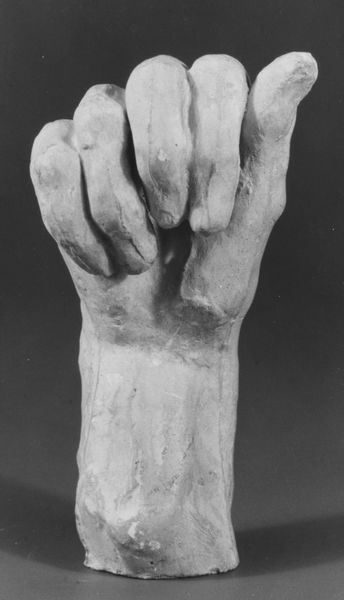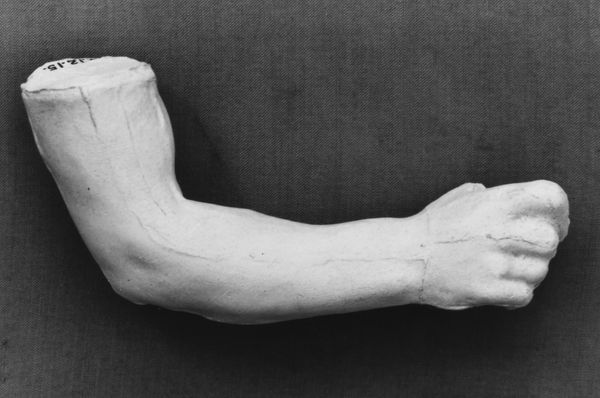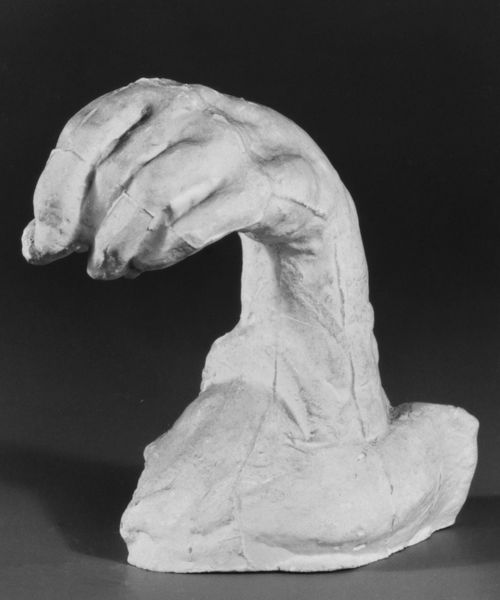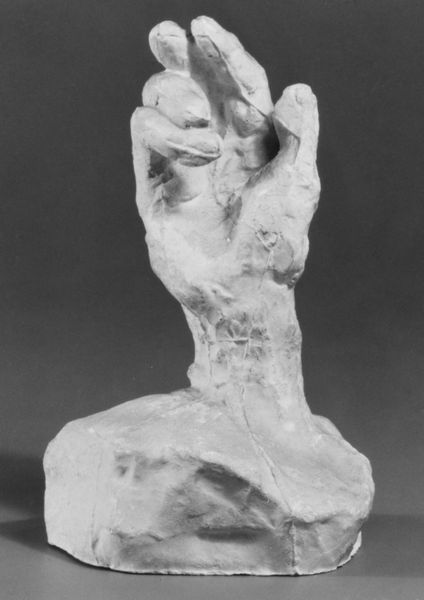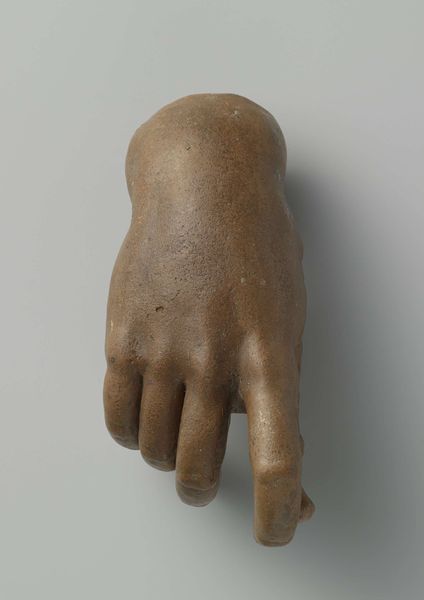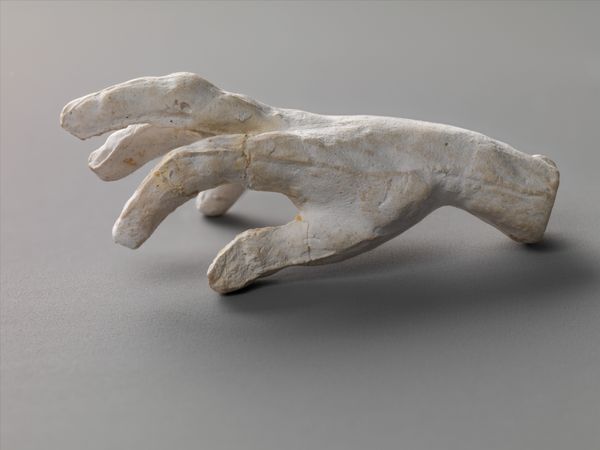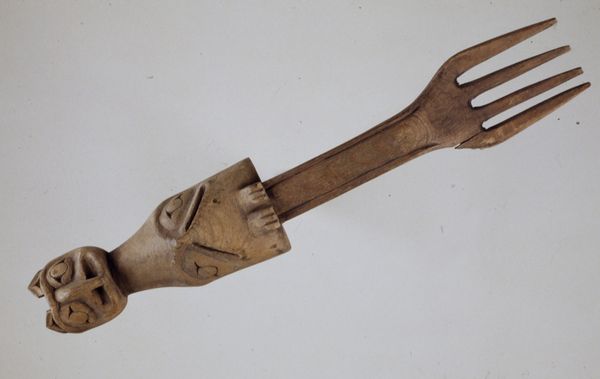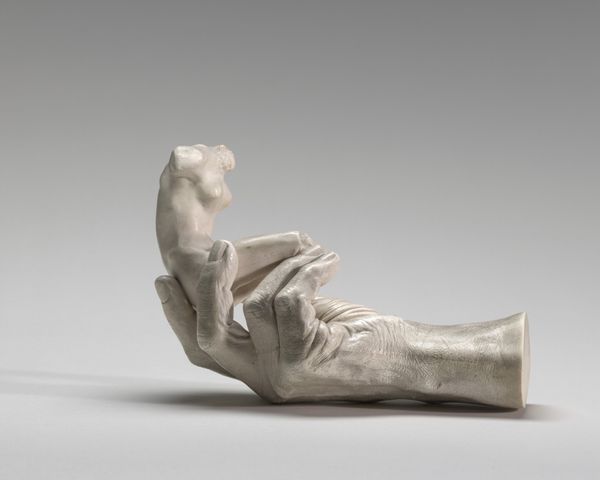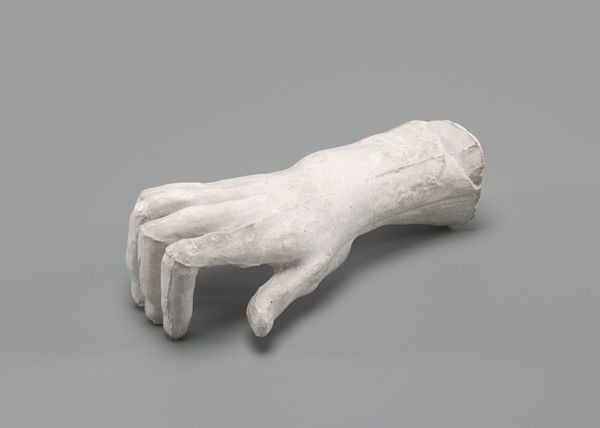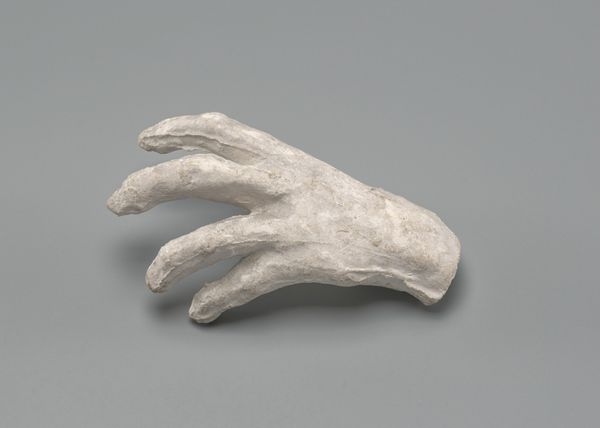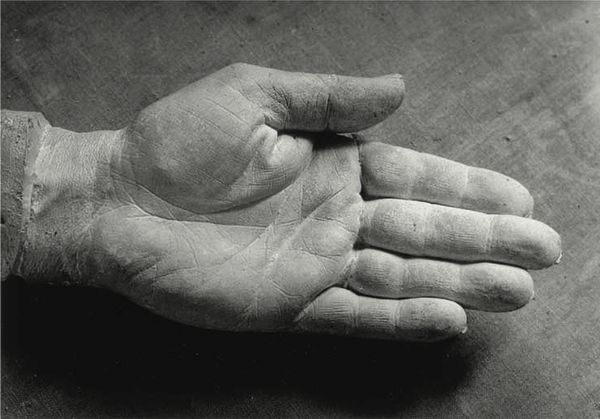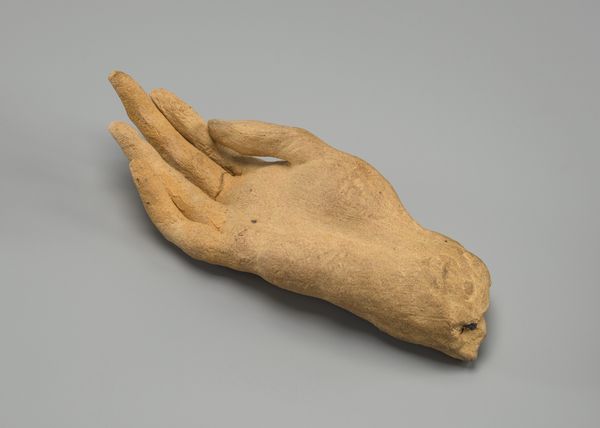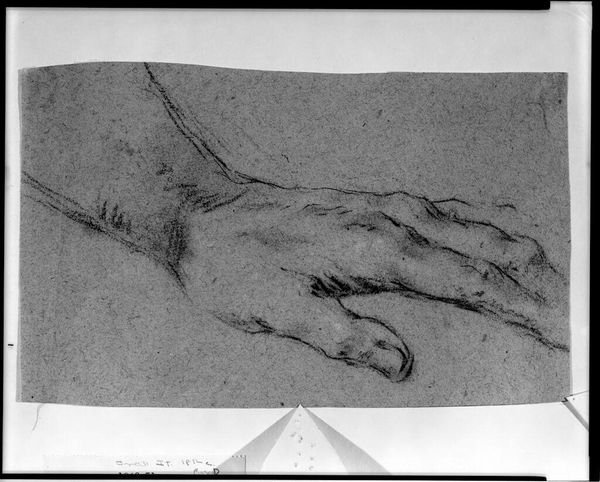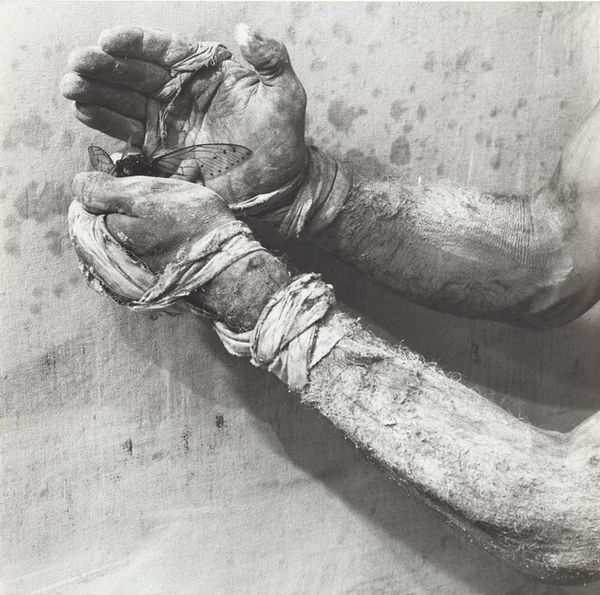
sculpture
#
portrait
#
sculpture
#
form
#
sculpture
#
academic-art
#
decorative-art
#
realism
Dimensions: Length: 6 1/4 in. (15.9 cm)
Copyright: Public Domain
Curator: What a fascinating piece! This is "Girl's Hand" attributed to Auguste Rodin, although the dating is quite broad, between 1800 and 1966. It’s currently housed at the Metropolitan Museum of Art. Editor: It's surprisingly intimate for something potentially from Rodin, who I usually associate with large scale works. The stark whiteness of the sculpture coupled with the hand’s gentle, almost hesitant, pose, gives it a vulnerable feel. What material is it made of? It looks rather fragile. Curator: Its composition offers insights into Rodin’s, or perhaps an unknown sculptor’s understanding of realism within decorative arts. It’s about capturing an essential form—the grace and fragility we associate with childhood, a hand frozen mid-gesture. Given that broad timeframe, it's fascinating to consider it in different historical and social contexts. Could it be a memento, a fragment representing loss or remembrance, especially in relation to the labor practices, such as child labor, and associated exploitation of the era it comes from? Editor: Yes, labor is definitely central to how I view this. A hand—the instrument of labor—captured in such stillness raises questions. What sort of work would that young girl have been doing? We know the period, though vaguely. I am intrigued by its surface and the way the material has been worked; you can sense the shaping of it and its potential casting. That is labor itself. And what of the labor it then embodies—or should embody? Curator: That’s an astute point. And looking at it through a contemporary lens, we can also examine ideas around representation. Who has the power to represent this girl, to capture her image and, in essence, fix her identity? Editor: It invites a reflection on who is doing the handling – of clay, of materials, and of narratives. There is definitely something potent here. It challenges boundaries between high art, object, craft, representation, all anchored to its physicality, a poignant consideration of the relationship between making, maker, subject, and audience. Curator: Absolutely. Viewing the art through the lens of labor adds even another, poignant layer of meaning to this modest object, prompting questions around exploitation, documentation and artistic choices involved. Editor: It goes to show how a focused consideration of material conditions, labor, and making can reframe our interpretation of seemingly simple object. It speaks volumes if we only care to look beyond just subject.
Comments
No comments
Be the first to comment and join the conversation on the ultimate creative platform.
